As an Amazon Associate I earn from qualifying purchases.
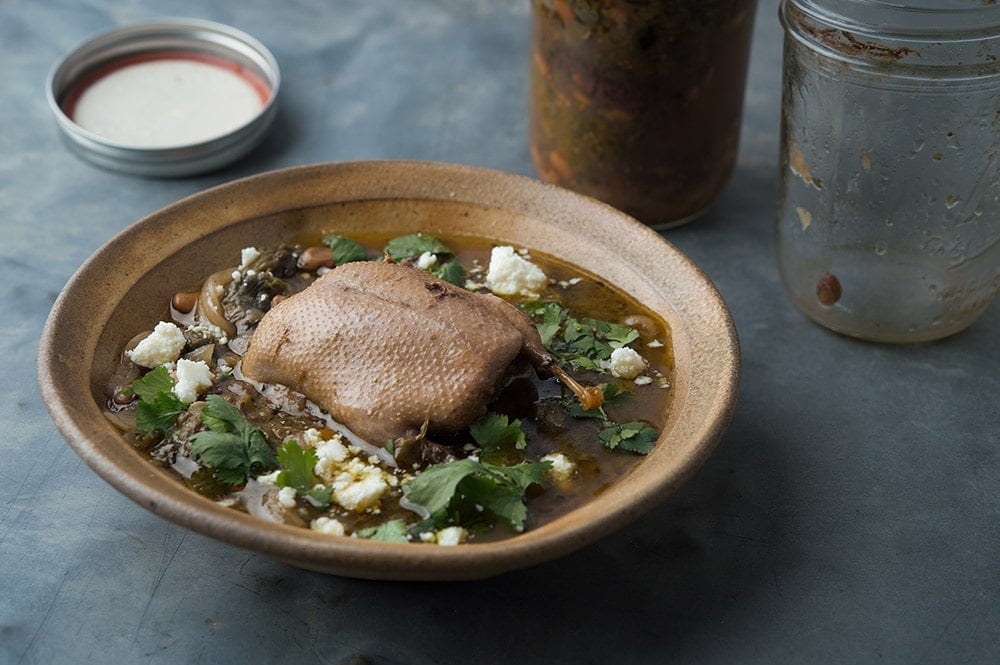
Some time ago my friend Jesse Griffiths wrote what I consider one of the great wild game and fish cookbooks of this generation. The book is called Afield: A Chef’s Guide to Preparing and Cooking Wild Game and Fish, and it was nominated for a James Beard Award in 2013; if you don’t own it, you might want to. Jesse is a Texan, and his ingredients and recipes reflect that, but the book is valuable no matter where you live.
While reading it, one recipe in particular struck me: Teal in a jar.
It’s a funny little recipe. Texas, like many states, has an excellent early blue-winged teal season, and hunters can stack up a bunch of these little ducks in a hurry. Jesse takes the birds, plucks them, and stuffs them in a Mason jar with beans and such, then cooks them ever-so-slowly in a water bath until everything is meltingly tender. At first I thought it was a gimmick: Why bother with the jar? Why not just braise everything all together?
Well, you could, but the jars wind up doing two good things: They are nice single-serving portions, and the ratio of stuff-to-surface area is just right for long, gentle cooking. If you had everything in one big pot, the meat and beans and such in the middle would not cook at quite the same rate as the ingredients on the edges. What’s more, it’s kinda cool to give everyone a jar at the table to open and pour into their bowls.
I didn’t want to just copy Jesse’s recipe, so I thought about what should go into my jars for a long while. Then I remembered a great hunting trip I did in New Mexico a few years ago with my friends Lane, a chef in Santa Fe, and Garrett, who runs the New Mexico Wildlife Federation.
We’d hunted a reservoir in southern New Mexico where what seemed like millions of green-winged teal were spending the winter. (If you are a member of Delta Waterfowl, I wrote about this hunt for their magazine last year.) Flocks of dozens would randomly land in our decoys, peeping and doing that lunatic quack the hens do, then fly off somewhere else. It was an epic day, all I could do to not shoot my six birds in one volley. I only halfway resisted, shooting four teal, plus a wigeon and a pintail.
As it happens, one of Lane’s favorite dishes is green chile teal. In New Mexico, the world is separated into red and green, for whichever Hatch chile you prefer. I’ve never made Lane’s dish, although I think I have the recipe lurking around in some dark corner of my email inbox somewhere, but I kept it in mind. Southwest teal it would be. Well, as readers of this space know, I am a big fan of the ingredients of the Desert Southwest: Chiles, nopales (prickly pear cactus), native tepary beans, cholla buds, that sort of thing.
Easy enough to adapt Jesse’s recipe for this. I used some tepary beans I had lying around, plus some cholla buds I dried myself. These are the unopened flower buds of the cholla (choy-ah) cactus, and when dried, then reconstituted and eaten, they taste an awful lot like artichoke hearts. You can buy them online if you don’t live in Arizona or New Mexico.
Not sure what might be a good replacement, as they are sturdy and stand up to being cooked for 3+ hours. Dried mushrooms, maybe? I also had some of my homemade salsa verde to add some zing to the jars.
The result surprised me. I was worried that I wouldn’t like the breast meat of the teal cooked for so long; I normally prefer it medium-rare. But I found I didn’t mind at all. Similarly, I was prepared to be put off by the skin, which, after being cooked for 3 hours, was very soft.
What I found was that it really went well with the beans, which, miraculously, were still solid, although fully cooked. (I suspect it is the acid in the salsa verde that kept the beans whole.) Soft and fatty skin with hearty, starchy beans = a very nice bite.
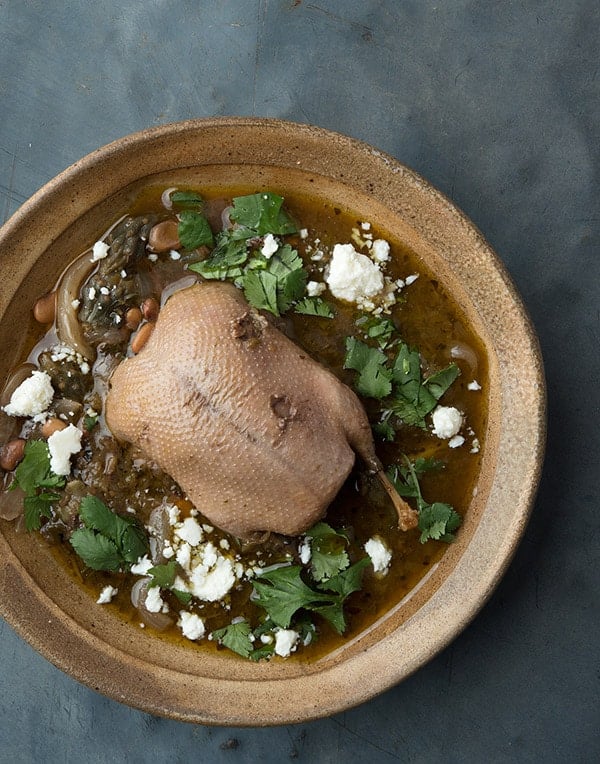
The whole garlic cloves were fun to eat, and everything brightened up with a squeeze of lime juice, some fresh cilantro and a dusting of dry Mexican cheese. All in all, a success worth sharing.
Don’t get hung up on the Southwestern ingredients, though. You could take this recipe in any number of directions. You could put everything in a curry and go Indian. Or go with paprika, more onions and a bit of caraway for a Hungarian touch. Or have lots of hard root vegetables like celery root and rutabaga and go Nordic. Maybe a Chinese red-cooked teal might work, who knows?
The point is the method. A small bird, or something similar (see below), stuffed into a jar with other good things to eat that will stand up to long cooking, topped off with a little water or stock, and slow cooked in a water bath until everything is nicely cooked. It’s a great technique. Thanks, Jesse!
Southwest Teal in a Jar
Ingredients
- 4 ounces of tepary beans, or some other bean
- 4 teal, plucked and gutted
- Salt and black pepper
- 1 tablespoon duck fat, lard or cooking oil
- 1 large onion, sliced root to tip
- 1 head of garlic, peeled
- 1/2 cup dried cholla buds or dried nopales or dried mushrooms
- 1 1/2 cups salsa verde, homemade or store-bought
- Pint Mason jars
- Chopped cilantro, lime wedges and dry Mexican cheese for garnish
Instructions
- Pour boiling water over the tepary beans and let them soak for 4 hours. Meanwhile, use shears to cut out the backbones of the teal and then use a paring knife to remove the ribs and saber bones (the "shoulder blade") of the ducks. You don't need to do this, but it makes the teal easier to eat when you are ready. Once you have the bones trimmed, set the teal back in the fridge while the beans soak.
- When the beans are hydrated, put them in a pot and cover with water by about 2 inches. Add the dried cholla buds if using. Bring to a simmer and cook gently for 20 minutes. While this is happening, preheat the oven to 300°F. Get a roasting pan ready. Put the duck fat in a pan set over medium-high heat and when it's hot, add the sliced onions and saute until they are slightly blackened on their edges. Add the garlic and cook another minute or three. Turn off the heat.
- Drain the beans. Put a few in each Mason jar. Add some onions, then set the teal in the jar. Add garlic cloves, more beans and cholla and salsa verde until they just about cover the teal. Add water (about 1/2 cup) to come up to 1/4 to 1/2 inch from the lip of the jar. Put the lids on the jar loosely and set in the roasting pan. When you have all the jars ready, fill the roasting pan with very hot water about halfway up the sides of the jars. Set in the oven and cook for 2 1/2 to 3 hours.
- Serve solo, or over rice. You'll want some chopped cilantro, lime wedges and dry Mexican cheese like cotija to garnish.
Notes
Nutrition information is automatically calculated, so should only be used as an approximation.

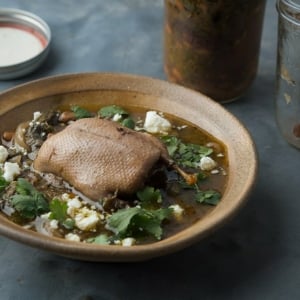
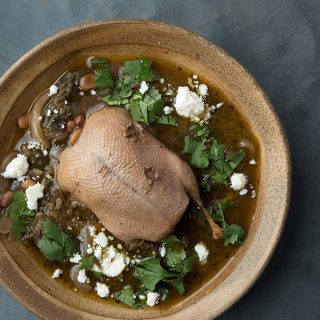

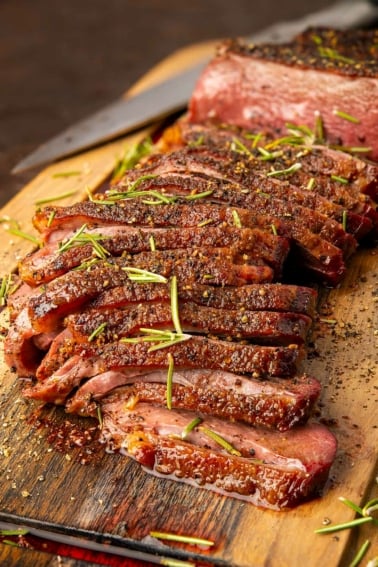
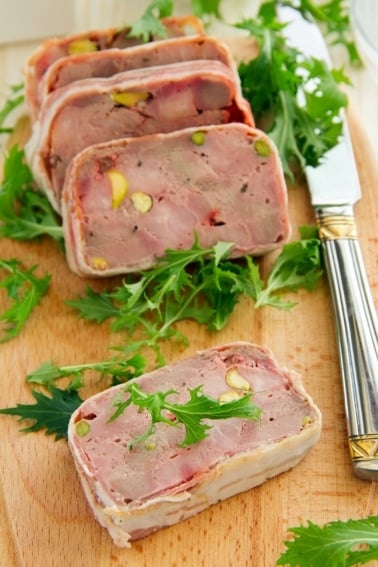

Great technique! I did two pints with two pine squirrels and one fox squirrel. Coconut lime for the sauce with jalapeño, carrots & mushrooms. I toasted some shallots, ginger, & garlic before packing the jars and pre-cooked the coconut milk, lime juice, couple pinches of cumin, curry powder, s&p for a couple minutes. Turned out great!
Would it be possible to do this in a canning jar, and pressure cooker, and can everything together, similar to pressure canned venison? Or would things go mushy and weird?
Sounds great. Can’t wait to try. Would these cooked teal last a long time in the fridge?
Matt: Not a long time, but probably a week.
I’m thinking about trying this with my remaining whole plucked wood ducks from last year – but with a slightly different spin on the ingredients? I have some larger size mason jars they migh fit into.
Do you think you could do this in a crock pot (I have a very large one)?
Cynthia: Not in a jar. But you can certainly cook teal in a crockpot.
One of my favorite recipes from Jesse! This is really awesome for a large dinner party because it is not only tasty, but really unique. Love your variation ideas!
Looks so delicious. Will give it a try.
I have a freezer full of squirrels that I might stuff into a jar and give it a whirl. I have been cooking in Mason Jars for years and people are amazed that you can even do it! Then I tell people that the canning process is much more intense on a jar than simmering it in a water bath for a few hours.
Could also do it with a larger duck and a quart mason jar. Like a widgeon or a gadwall. I am going to try this.
I did this recipe with 4 teal last year after seeing it in Jesse’s cookbook. I gave away to my huntin’ buddies and everyone loved it. Too bad I don’t have access to that farm pond any more… Jeese’s recipe had spicy sausage along with beans. I look forward to doing this again with Hank’s recipe above.
Au Pied de Cochon in Montreal serves a dish called ‘Canard en Conserve’ (Duck in a Can) that’s along those lines. They use Magret breast and frightening amounts of foie gras, with roasted garlic, balsamic demi, and bacon-cooked cabbage in the can, then served on a celeriac mash. Made it once as a special treat and it was a delicious, ultra-rich, total depth charge to the gut. They also sell a canned, ready to go version at the restaurant. Wonder if you could simmer the jars as normal, then pressure can some for later…
Genius. I will have to check out his book. Could I use this same method for confit to cut down on the amount of fat I need? Maybe it wouldn’t be much different than a well-packed pot.
Chris: Yep. You could use this for confit.
I recieved Jesse’s cookbook for xmas, and this reciepe jumped out at me as well. I was wondering if you would consider putting them in a pressure cooker, since they’re already in mason jars? Or would that much heat and pressure just be too much?
Josh: Nope. Pressure cooking will be too harsh. You really want the slow gentle heat of the water bath.